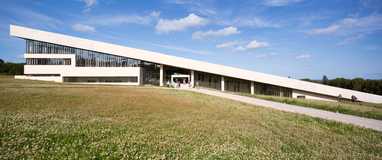Report / Aarhus
Dock star
We dropped in on a Danish coastal city where imaginative rejuvenation projects are making it a rival to the country’s capital. But don’t mistake its progress for gentrification; this is a fresh approach sprinkled with liberal amounts of grit.
“We’re not interested in neat branding. We tried that; it was a disaster,” says mayor of Aarhus Jacob Bundsgaard. “Your brand needs to be credible, it needs to be rooted in the city.” He is looking out over the skyline through, literally, rose-tinted glass but this laidback 39-year-old is no deluded optimist. Together with city architect Stephen Willacy he is overseeing a genuine paradigm shift in the liveability of Denmark’s second city.
We are standing in Your Rainbow Panorama, Danish-Icelandic artist Olafur Eliasson’s multicoloured city halo perched atop Aros, the modern-art museum. And OK, technically the glass is violet. When it opened in 2011, this DKR60m (€8m) enclosed circular walkway became the audacious new symbol of a city emerging from a rather dour post-industrial chrysalis. “The effect of Rainbow has been amazing, particularly for our international profile,” the Social Democratic mayor says, adding that the city’s name was changed from Århus to Aarhus for the same reason. “But you can’t just have one attraction. Now we have Moesgaard [the new Henning Larsen-designed museum that is home to Grauballe Man, the world’s best preserved bog body], the new botanic garden and, of course, there’s Dokk1.” More on that later.
Aarhus has always been wealthy but it lacked the appeal and liveability of the capital and was usually thought of by Copenhageners as the chippy little brother “over there” on the Jutland peninsula. These, though, are boom times for this city of 320,000, home to Denmark’s busiest container port, one of the country’s highest-ranking universities (45,000 students live here) and blue-chip companies such as wind-turbine firm Vestas, global clothing giant Bestseller and mega-dairy Arla.
Aarhus 2030, a plan to create a more liveable city for the 60,000 people expected to move here over the next 15 years, hinges on tempting car-users out from the centre with a 110km, DKR2.4bn (€322m) light railway network; investing DKR1.3bn (€174m) to improve Gellerup Park, Denmark’s largest “ghetto” (as referred to by the Danish government) and home to more than 80 different nationalities, including some highly publicised Islamist radicals; and several new, mixed-income housing developments, most of them on brownfield sites. Along the way Aarhus will enjoy a stint as European Capital of Culture in 2017.
The city’s rebirth was kickstarted by the exigencies of its port. Founded by the Vikings in the 800s, today it handles 66 per cent of Denmark’s container traffic and is a major hub for northern Europe. With an increasing number of mega-ships arriving in the city, the only way to expand (and compete with Hamburg, 340km away) was by relocating the whole shebang to the south of the city.
Aarhus was always aquaphobic. In denial of its seaside location, for decades its bay was obscured by cranes, containers and warehouses. But now, at last, the city has reconnected with the water. “We’ve opened up the harbourfront and brought the water right through the city centre by opening up the Aarhus River,” explains Willacy, an Englishman who has lived in Denmark for 30 years. “Everyone said it would be a catastrophe but it’s been our most successful urban initiative ever.” The harbourfront is unrecognisable from MONOCLE's last visit three years ago, with large, open public spaces and the DKR2.1bn (€280m) library known as Dokk1, which opened in June.
“You should think of it as a noisy living room for the whole city,” says library manager Knud Schulz of the multifaceted space (both in function and façade) with an area the size of five football pitches. Dokk1 features underground parking for 1,000 cars, a café, event spaces and private offices – not forgetting its 325,000 books. Eventually it will have its own light-railway station on the ground floor. As part of the design process, architecture firm Schmidt/Hammer/Lassen consulted with toddlers so it also boasts numerous play areas.
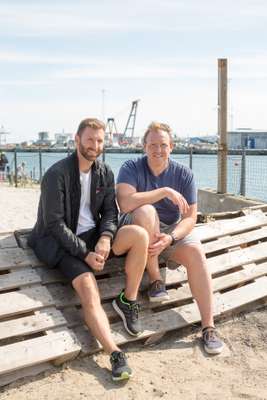
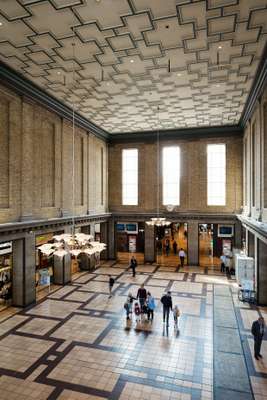
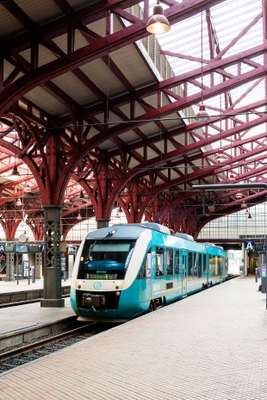

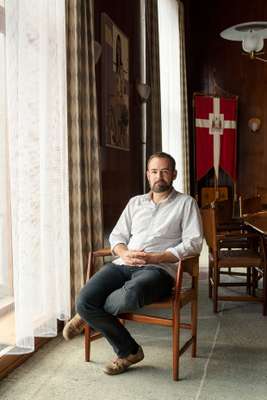
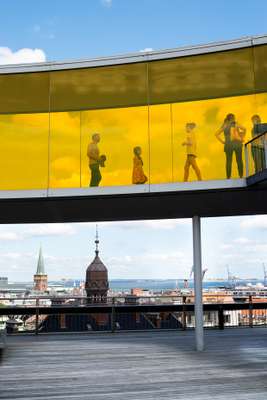
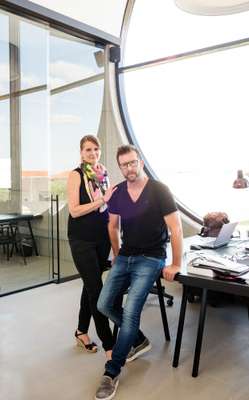
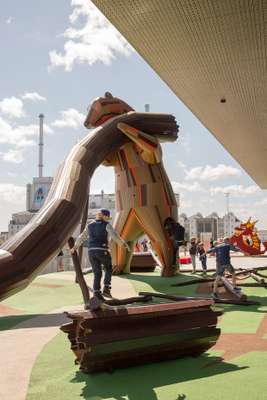
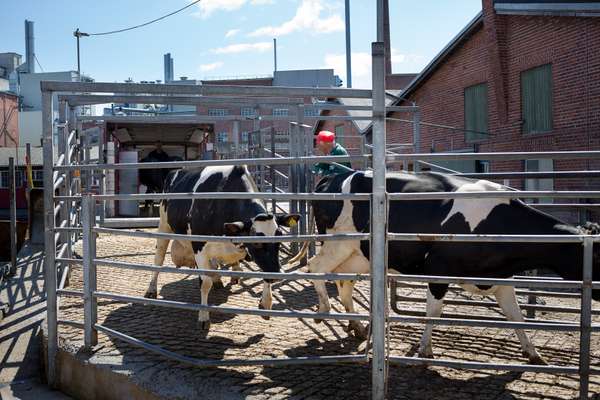

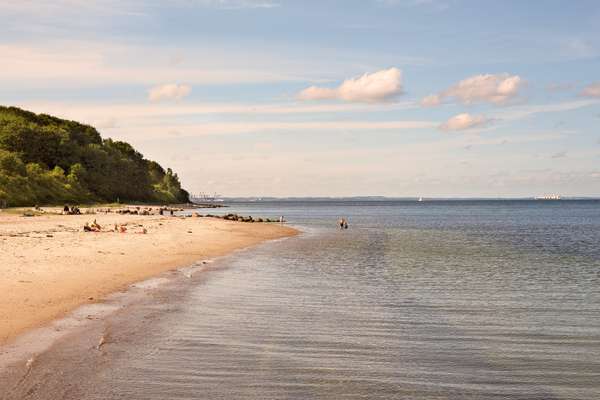

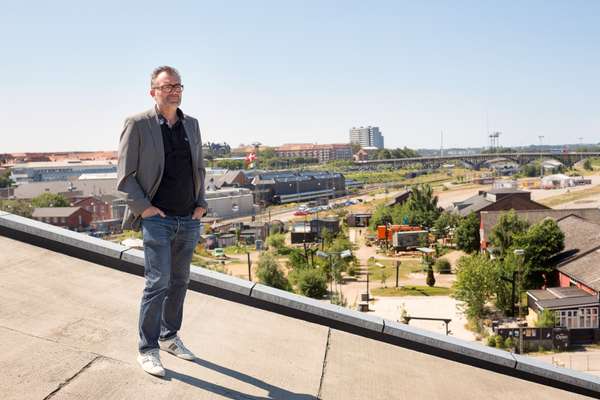
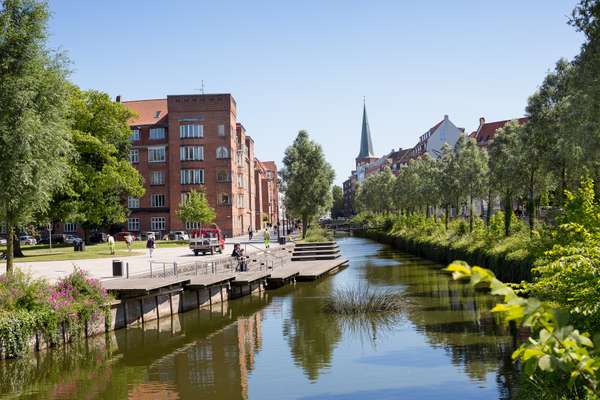
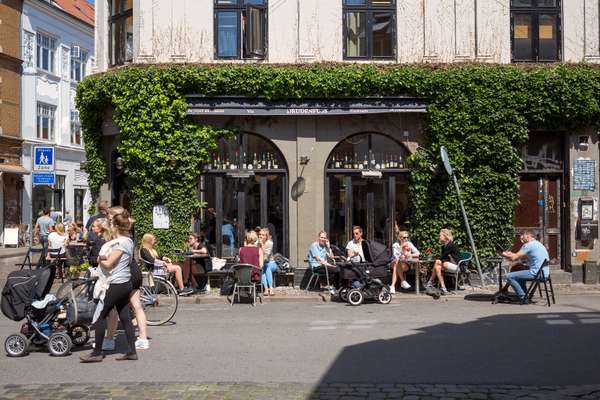

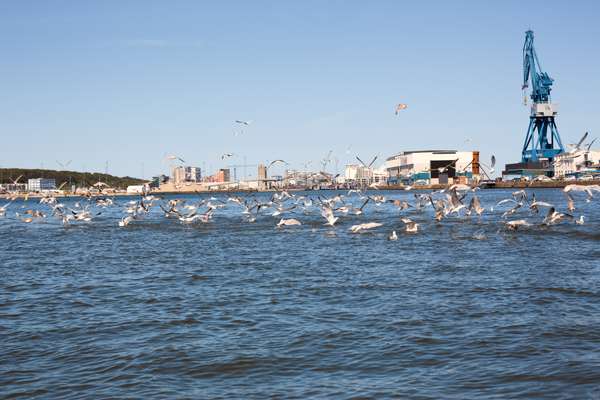

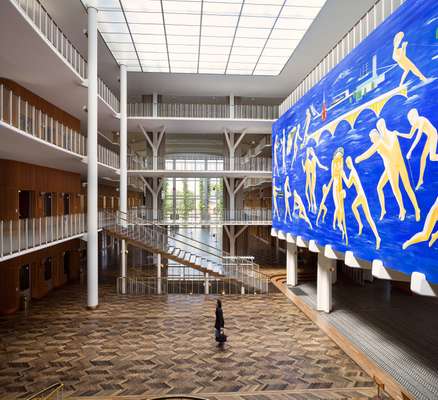
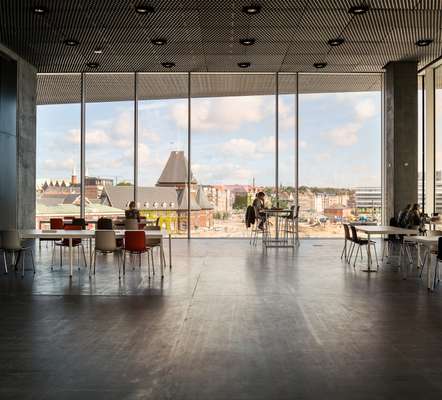
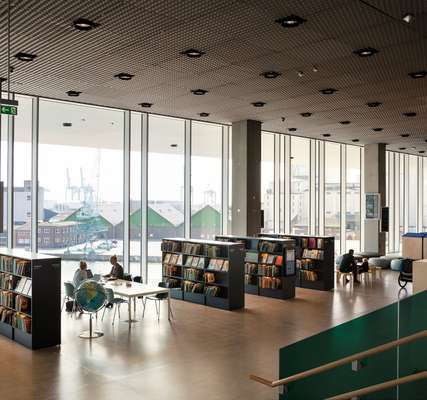

Schulz is charged with bringing life to this new city landmark. “We were flying drones in here yesterday,” he says, laughing. “They are illegal outdoors but no one has said anything about indoors.” Pride of place in the library goes to the world’s longest tubular bell that lets out a mighty clang as we speak. “It is rigged up to Aarhus hospital’s maternity wing,” explains Schulz. “Each time a baby is born they press a button and the bell rings here.”
Continuing our tour of the city in an area close to the new container port, Willacy passes a small walled zone for substance abusers beneath an old overhead coal-crane bridge (which will eventually be turned into an Aarhus High Line). Nearby is a fully operational abattoir, complete with cows queuing to meet their maker.
“You have the smell and noise and sometimes a cow escapes,” Willacy says. “Forget your gentrified meatpacking districts: this is the real thing. I really want to protect the grittiness in this city. We don’t want to over-gentrify; that’s why we insist 25 per cent of private developments are housing-association flats. It’s a policy that has been adopted nationally.”
Continue through the more conventionally appealing medieval heart of Aarhus in the company of Willacy and you soon discover that, as well as a container port and university town, this is a city of architects: at every turn we meet former students (he used to lecture at the city’s renowned architecture school) and colleagues from some of the several world-class firms that are based here.
On Graven, a bustling street lined with cafés and bars, we bump into Julian Weyer, a partner at CF Møller Architects – perhaps the most venerable of all the city’s studios. Weyer was responsible for planning the new container port: “We thought it would take 35 years but within five we have moved the traffic flow away from the city and removed trucks from the harbourfront.”
Weyer shows us around the city’s greatest architectural jewel, Aarhus University campus, designed in a functionalist-Bauhaus style from the 1930s onwards by a team headed by the late CF Møller. “Getting a university was a really big step for this city,” says Weyer, whose firm continues to be involved in its expansion. He invites us to look at the view from the 12th-floor roof terrace of CF Møller’s offices, where he points out the company’s most recent developments: the new harbourfront HQ for Bestseller and, to the west, the padded-polymer dome for the new botanical gardens.
We can also see Godsbanen, the old railway goods yard that has become a focal point for a diverse range of start-ups. The 50 or so tenants pay different rents, ranging from DKR500 to DKR7,500 (€65 to €1,000) a month depending on their means. It is overseen by Mads Peter Lauritsen of Institut for X.
“Institut for X is a platform for small businesses, which by our definition can be anything from a band to an architecture studio,” says Lauritsen. Godsbanen (“the freight yard”) has the makeshift look and slightly anarchic feel of Copenhagen’s “free state” of Christiania, albeit blessedly free of drug dealers and dobermans. “Because this is Aarhus, when we had the idea it was easy to make contact with city hall, which owns the site.”
Godsbanen might be living on borrowed time. In two years, builders will break ground here for the new architecture school. All is not lost, however: “My dream is for it to co-exist with the school,” says Willacy. “I want that complexity in our city.”
One of the most successful start-ups of the last few years here is Bellinger, an eyewear company founded a decade ago by husband-and-wife team Malene and Claus Bellinger. It developed the world’s first adjustable carbonfibre glasses, the Blac range, still handmade in its Aarhus HQ. “We could move but Aarhus has everything and it’s still cosy, friendly and open-minded,” says Malene. “The beach and the forest are both five minutes away,” adds Claus. “It’s just easier to live here than in Copenhagen.”
Lasse Dahl, Scandinavian CEO of Designit, agrees. One of the world’s biggest names in strategic design, the company was founded in Aarhus and although its waterfront HQ has been bought by India-based IT company Wipro, Dahl is adamant that they will stay in the city: “The ‘Aarhusness’ of Designit is a key USP for us. Our flat, open corporate culture has a big appeal to our clients. We’re a design firm without a design diva; much more Danish.”
We finish our three-day tour on Aarhus Ø, a residential area being built on the site of the old container port. One of the main private developers is Nicolai Hommelhoff, who works with his project manager Anders Laursen. The buildings around us resemble giant shards of ice; apartments inside sell for DKR7m (€940,000). It has the look of a classic market-led, postmodern rejuvenation project – only here, four of the blocks are student accommodation and, as in the rest of the new city districts, 25 per cent of the apartments are owned and operated by housing associations.
“We are using the whole site as a kind of test centre,” says Hommelhoff. “We try to build, say, a mussel farm or a communal garden and if they are successful we make them permanent. Everything is possible here because the city authorities are so open.” On this summer’s day, the urban beach Laursen designed is full and the garden is flourishing. “Normally you build buildings, people move in, then 10 years later you get the life,” he adds. “But we are creating the life while we are building.”
For years Denmark has suffered from Copenhagen’s pull as a skills and investment black hole, its gravity irresistible for graduates and investors alike. But with living costs there now perilously high (one of the reasons it plummeted from first to 10th in MONOCLE's most-recent Quality of Life Survey in issue 85), the country badly needs a liveable second city.
Aarhus still lacks a proper international airport, (“Realistically it might take eight years or so,” says the mayor), it could do with a boutique hotel or two and better integration of its immigrant population is an urgent priority. But so far Aarhus is offering a convincing model for how a second city can redesign and reinvent itself to become a legitimate rival to its capital on its own terms.
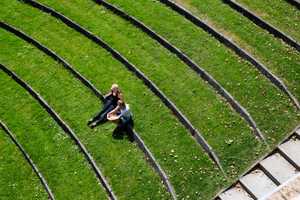
How Aarhus is making capital
Sound business minds:
Companies here have a reputation for cool heads, harder deals, corporate longevity and growth.
Compact community:
Everyone knows everyone else, which builds trust and makes decision-making chains shorter.
Progressive government:
City hall isn’t afraid to innovate and take risks, while maintaining a healthy social balance downtown.
University influence:
The student population keeps the city fresh and agile, with a renewable skills supply.

